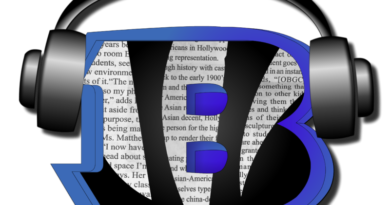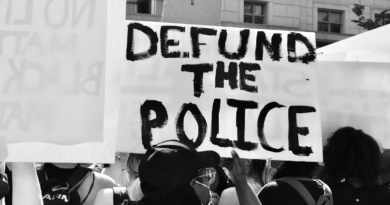A Tale of Two Protests
In more than 40 cities including Washington, DC, demonstrators have peacefully congregated in streets chanting, “Black Lives Matter;” pleading for justice in America; and crying for the dissolution of what many protesters allege to be this country’s police state after former police officer Derek Chauvin killed George Floyd in Minneapolis, MN.
Biased racial profiling, disproportionate arrests, and inordinately high incarceration rates continue to haunt African Americans in addition to the unparalleled amount of police violence to which they are subject. According to NPR and a research and advocacy group called Mapping Police Violence, black Americans are two to three times more likely to be killed at the hands of police than white Americans, despite them comprising only 13%-14% of the country’s population.
For many, the protests are spiritual and cathartic events that provide a constructive outlet to rail against centuries of institutionalized brutality towards and oppression of black people.
Images and footage of demonstrators of all skin tones sharing food and water; unifying behind signs and raised fists during sit-ins, die-ins, and marches; and gathering to collectively mourn at memorials for Floyd promote an immense sense of solidarity within the Black Lives Matter movement.
There have also been instances of police officers standing with, embracing, and engaging in civil discourse with those they are poised to oppose. This suggests that as flawed as America’s justice system may be, there is hope that humanity and empathy will prevail in the war against systemic ignorance and hate.

Less uplifting and inspiring, however, is the persistent instigation of violence and crime from police officers and rogue rioters alike. Looting shops, launching objects at rows of police officers, setting cars and trash cans on fire, and vandalism have added an element of controversy and chaos to the overall movement. People peacefully protesting vow those demonstrating unlawfully are not truly affiliated with the Black Lives Matter movement.
In the social media firestorm that has exploded in the past two weeks, support has been expressed for protesters taking these more unorthodox methods to make their voices heard, even by store owners whose shops have been looted. Metropolitan Optical’s Dr. Saba Ayalew expresses that she could not bring herself to be angry when she found her DC store was looted. She told WJLA that she does not condone violence, but understands if such measures have to be taken for the Black Lives Matter movement to finally be paid attention to and be able to effect change.
Common sentiments from celebrities like Daily Show host Trevor Noah include that people have no right to tell an oppressed minority how to protest, that outraged white people would do the same if the roles were reversed, and that there is no one right way to demonstrate. Others, however, including African American, immigrant, and Latino small business owners, are begging protesters to stop vandalizing their property and claim that looters are detracting from the protests’ primary goals and further disenfranchising minority communities.
Pundits invited to speak on CNN expressed confliction when it came to the manner in which these protests were being conducted. An alarming amount of protesters did not seem to be wearing masks or practicing social distancing in the middle of a pandemic, and when a record number of people have filed for unemployment, there is a question as to whether destroying innocent people’s livelihoods is necessary in order to make a strong statement.
African American protesters themselves have condemned the looting and excessive violence, declaring that disorderly demonstrations are not being conducted in honor of George Floyd, Breonna Taylor, Ahmaud Arbery, and the thousands of other black people murdered by police officers in the last seven years.
Junior Kelen Chen, who was inspired by the Black Lives Matter movement to become more involved in activism, offers his opinions on the violence and looting. “I disagree with the looting and burning of small businesses,” he begins, noting that many of those businesses do not have insurance or sufficient funds to rebuild. “But we have protested peacefully many times and have been shut down almost every time. This way, we have been given an opportunity to be in the spotlight longer than just a day or two.”
Chen expresses that he does not have as much hesitation when it comes to supporting protesters looting major corporations’ stores. “Loot those big corporations and chains,” he adds. “They are the powerhouses of capitalism and continue to use human labor [for] a pathetic price to [make] a huge profit.”
In response to the vandalism, street fires, and physical confrontations, police officers in several cities, namely Minneapolis where Floyd was killed, have fought back using rubber bullets and tear gas, providing a stark contrast to some of the more wholesome images circulating the internet. There have also been accusations of police officers provoking violent riots themselves or using unnecessary amounts of force on peaceful protesters. Police have also used pepper spray or tear gas on reporters who were merely covering these historic events. Omar Jimenez, an African American reporter for CNN, was arrested in Minneapolis for merely reporting on the protests. During his mid-broadcast detainment, Jimenez inquired as to why he was being arrested, but the officer never acknowledged him and proceeded to make his arrest. In DC, a white reporter was pepper sprayed in his face and was caught on camera rinsing his eyes out with bottled water.
Officers in DC made 17 arrests May 30 and 11 officers were injured in confrontations with protesters, one even breaking their leg. Across the country, more than 100 arrests of protesters have been made. Protesters near the White House have reportedly engaged in confrontations with Secret Service agents. While DC Mayor Muriel Bowser expressed concern over the violence, vandalism, and a potential spike in COVID-19 cases, she was hesitant to enforce an early curfew on protestors until Monday evening when Bowser enforced a curfew of 7 PM after protesters defaced national monuments and police set off flash bangs in an effort to separate the peaceful protestors from the unruly ones and deter violence.
Other mayors, however, like Mayor Greg Fischer of Louisville, Kentucky, view curfews as fully futile. Fischer actively encourages his residents to exercise their rights, saying he stands in full support of the movement.
For the most part, these protests seem to be a battle between law and disorder. How much violence and destruction on the protesters’ part is to be condoned? How many people are looting stores and burning buildings to make their voices heard when sanctioned methods of protest have, for decades, fallen on deaf ears? How many people are looting stores and burning buildings for the sake of chaos? Is this simply what is to be expected when a whole demographic is the victim of a system of oppression and racism? In a broken justice system, which laws are objectively just and lawful? Is there any room to say violent protests are unlawful when police violence seems to be condoned and, at times, defended? Are face masks shielding those from the coronavirus necessary when there is a chance many in those crowds could one day end up shouting, “I can’t breathe,” anyway?
Everyone processes grief and tragedy differently, so there may not be a consensus on how to protest. What is important, however, is that every action taken is taken with the intention of furthering the Black Lives Matter movement and correcting centuries of wrongdoing on behalf of this country’s justice system.




